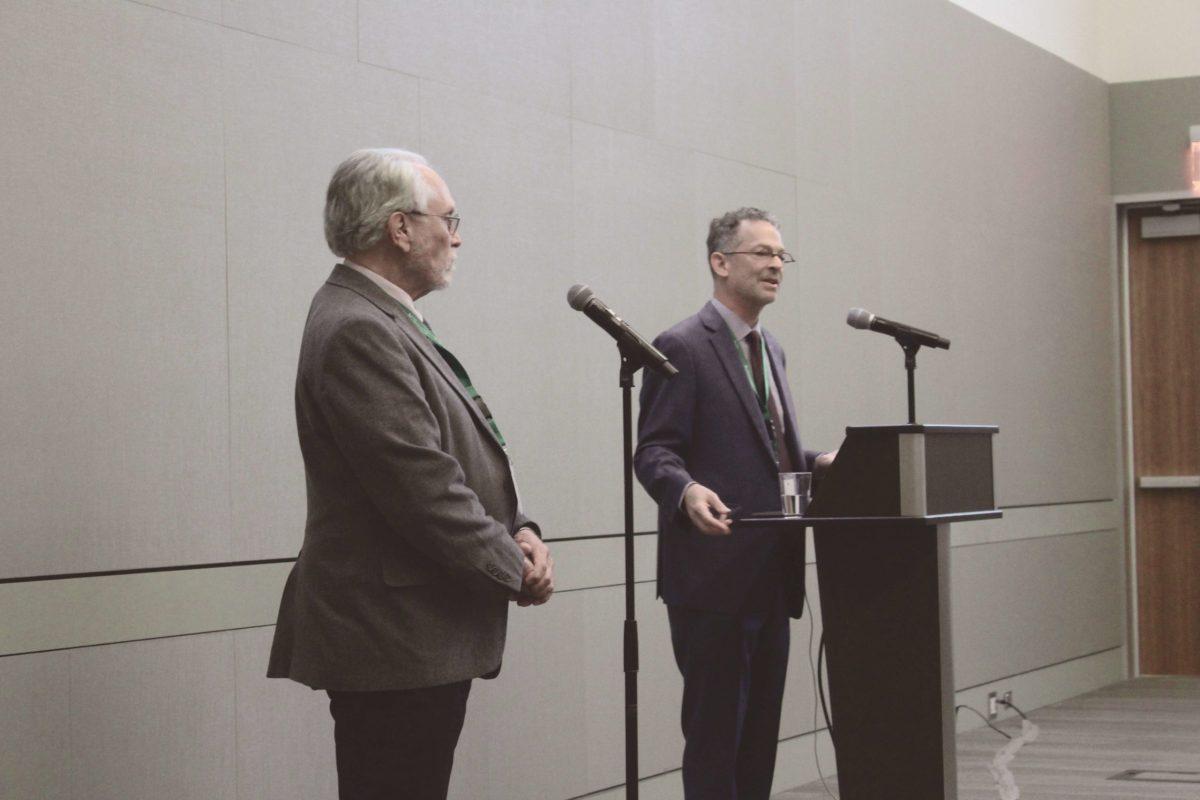The Ackerman Center for Holocaust Studies hosted the 53rd annual scholars conference from March 4 to March 6 at the Davidson Gundy Alumni Center.
This year’s conference, entitled “(Dis)Continuities in the Third Reich,” reflects on 90 years since Hitler’s rise to power and 85 years since Kristallnacht, also known as the night of broken glass. The conference aims to provide education on the dangers of antisemitism as well as expert perspectives on the Holocaust. This year’s conference consisted of three breakout sessions: a lecture from history scholar Martin Dean, a public dinner and a public lecture from author Glenn Kurtz.
Martin Dean, an award-winning Holocaust researcher and writer, started the conference early Sunday morning with a lecture on specific moments when Jewish communities realized Hitler’s government would be fatal, showcasing his extensive knowledge on the Babyn Yar massacre, a mass shooting against Jews perpetrated by the Nazis in Ukraine.
A primary goal of the conference was to connect the past horrors of the Holocaust to its parallels today, including authoritarian regimes across the globe. When asked about the response from non-Jewish people during the implementation of fatal policies during the Holocaust, Dean said, “It’s the same sort of thing that’s happening in Russia right now, not many people are going to put their necks on the line.”
Glenn Kurtz, author of “Three Minutes in Poland: Discovering A Lost World in A 1938 Family Film,”closed the conference with a lecture summarizing his 14-year effort to identify the people in a home video that his grandfather filmed in his hometown of Nasielsk, Poland just before the first Nazi roundup of Jewish people. Kurtz emphasized that every year, the world gets closer to the Holocaust becoming a purely retold story due to survivors passing away, which is why it is important to remember the atrocities committed against Jewish people.
Today, Kurtz details modern attempts to continue education on the Holocaust and prevent further erasure of Jewish narratives. Kurtz’s personal sense of responsibility upon discovering the home video jumpstarted his journey of learning about the history of the Holocaust. It also gives the people in the video a glimpse into the childhood they lost at the hands of the Nazi regime.
“I felt a great deal of responsibility to try and return this video to the people featured in it,” Kurtz said.





